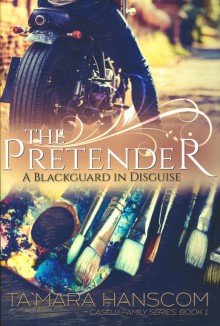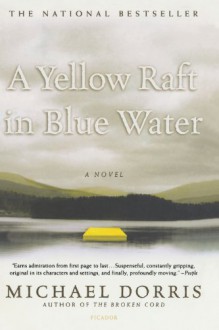
In April 1975, Tillie Caselli is a starry-eyed 17-year-old artist and Noah Hansen is a 23-year-old Vietnam War veteran and charming alcoholic. Noah doesn't realize it, but his preacher older brother is about to kick him out, a last-ditch effort to hopefully scare him into straightening himself out. It turns out that isn't necessary, however, because all Noah needs is a little motivation in the form of the beautiful, sweet, and proper Tillie. They meet while Tillie is in town for an art show. Tillie technically isn't allowed to date until she's 18, and certainly not without a chaperone, and Noah doesn't realize that she's still a minor. But it's love at first sight, and Tillie, keeping her family's story about knights and blackguards in mind, keeps an eye on Noah's behavior and is sure that he's a knight. From the moment Noah meets her, he doesn't touch a drop of alcohol and behaves like a perfect gentleman.
They promise to meet again and properly introduce Noah to Tillie's parents, but a misunderstanding comes between them. Noah prepares for a future with Tillie, not realizing that her heart has been broken by the belief that he's actually a blackguard. Meanwhile, Alex, the young lawyer Tillie had a crush on before she met Noah, has decided to court Tillie properly.
Okay, I'm going to start with some context. I picked up the first three books in this five-book series at the 2019 Book Bonanza, a convention intended primarily for romance readers. There were literal pallets of these books being given out, and I'm sure a lot of people assumed, as I did, that these were romance novels.
The author markets this series as "clean romance woven with Biblical truths," but there's no evidence of this on the book covers - the Bible quotes at the start of the books are the first indications of what you're getting into. When I grabbed the books at Book Bonanza, I assumed that this was a romance series in which the individual books focused on the self-contained romances of different members of the Caselli family, similar to many of Nora Roberts' trilogies. The Christian and family saga aspects were a surprise, and I'm glad I read a few reviews after getting a few pages into the first book, so that I could revise my expectations.
The bulk of this was okay, although far too slow-paced for my tastes. I wasn't wild about the relationship between Tillie and Noah - Tillie and anyone, honestly. She struck me as painfully naive and immature, someone who needed more time and space to grow, and yet the author kept pairing her up with grown men. Tillie was 17, Noah was 23, and Alex was 25, and although there were some concerns expressed about the various age differences, everyone brushed those aside extremely quickly.
There was a soap opera-like appeal to the story. If Tillie hadn't been so flighty and immature, a lot of her and Noah's future woes could have been done away with in an instant, but she was a 17-year-old idiot, so instead readers were treated to a year and a half of them gradually mending their hearts and building separate lives...which intersected just enough to keep readers wondering when they'd meet again. Considering how things turn out for the both of them by the end of the book, though, I have no idea how Hanscom plans to give them a traditional romance HEA without killing off other characters, having characters divorce each other (which I'm not entirely sure Hanscom would approve of), or having characters cheat on their spouses (which I know Hanscom wouldn't approve of).
It was the soap opera aspect that kept me reading, despite my dislike of the age gap and my impatience with some of the more overt religious aspects of the story. Unfortunately, the story dragged, focusing on things that either bored me, like the Caselli family apple picking festival, or aggravated me, like Tillie's pouting over her brother Petrice's marriage. There was some kind of police or FBI investigation mixed in, involving Tillie's brother Marquette and his wife Tara, that could have been interesting, except that the details were hard to follow - I got the impression Hanscom was far less comfortable writing those parts than she was with everything else.
I could put up with some of the story's religious aspects, but there were parts that made me grit my teeth. Mine and Hanscom's worldviews definitely did not match up. First, the purity culture stuff. The Caselli family had an ironclad rule about chaperoning Caselli girls who dated before age 18, which was why it was so shocking that Tillie went out on a date with Noah without getting permission first (never mind that her being 17 and him being 23 should have been a bigger deal than the unchaperoned date). Incidentally, Hanscom may have introduced an anachronism with her commitment to the purity culture stuff - Tillie wore a purity ring, and I don't think those came into use until the 1990s.
There were a few other little things here and there that bothered me, but the multi-page anti-abortion bit was particularly bad. A not particularly religious character got pregnant and said she was planning to get an abortion since she couldn't be with the father and since she was a drunk who couldn't care for a child. She was then counseled by multiple characters who told her "If you have an abortion you'll regret it for the rest of your life. You might even die. (Anecdote about a girl who killed herself after her abortion.) And also, abortions are terrifying. (Anecdote about a greasy "doctor" who scared off a terrified girl who'd been about to get an illegal abortion, never mind that safer legal options were now available.)" But they didn't just want to talk her out of having an abortion. If she planned to keep the baby rather than give it up for adoption, she needed to marry so that she wouldn't be a single mother. The result was a terrible decision that added to the overall soap opera feel of the book, but this time not in an even vaguely fun way.
In a lot of ways, this wasn't as bad as I'd expected it to be. I was interested enough in the characters to read reviews of some of the later books, in order to try to figure out what happened to them. However, I'm not interested enough to actually continue reading the series. I suspect Hanscom wants readers to root for Tillie and Noah as a couple, but at this point I think they're better off not seeing each other again. The soap opera appeal is still there, but it's not worth putting up with more achingly slow pacing and Christian moralizing.
Extras:
A "special message to the reader" specifically about the book's "proverbial 'wanton woman,'" the character who wanted an abortion. It underscored that the author and I really, really do not have the same worldview. Also, a one-page preview of the next book in the series.
(Original review posted on A Library Girl's Familiar Diversions.)

 Log in with Facebook
Log in with Facebook 









